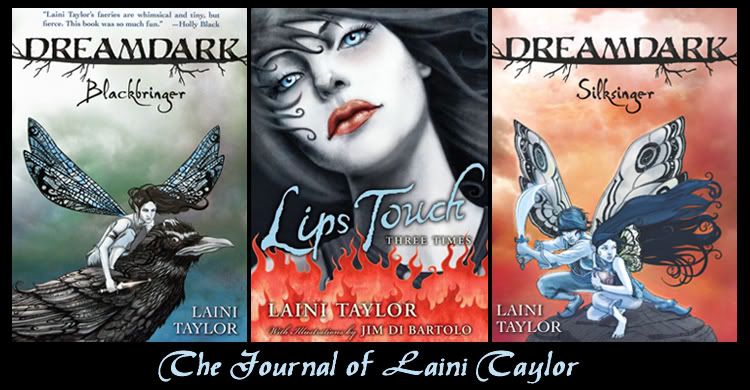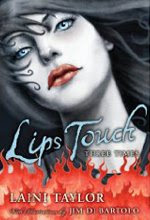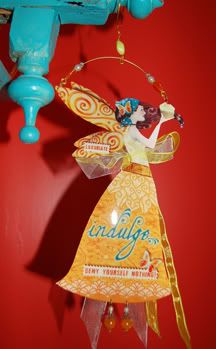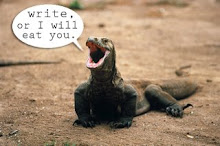
Okay, not to the death, maybe, but there's some tension between illustration and fine art. Recently another blogger asked me about illustration: what is it? How is it distinguished from "fine art"? This is a tricky question: do you know the difference? I'm going to attempt to say what it is, but I'm kind of making it up, so if you have an opinion, let me know what it is!
Illustration. I studied illustration in art school, and my goal was always to illustrate books, whereas I guess a fine artist's goal is to sell original work in gallery shows. For me, the essential difference between illustration and fine art lies not as much in style and medium as in intent: what is the purpose of the particular art work? Illustration is created to be reproduced, be that in a book, on a poster, advertisement, or whatever. I like to think of illustration as "singing for its supper." It has a job to do, whether it's telling a story, or conveying something about a product, and the artist will not be standing next to it to explain it. It must be fully self-sufficient.
Fine art, on the other hand, just is. It can be a bent wire on a wall, or a rumpled bed installation at a snooty gallery, or a geometric painting, or it can be a luminous landscape painting, a portrait, or... and this is where it can get weird, it can also depict a scene and tell a story, just like an illustration. Lots of fine art is illustrative; just as lots of illustration is fine art. But what makes the Sistine Chapel ceiling NOT an illustration, even though it tells a story? It was not done with the intention of being printed and distributed. Ideally fine art should be either beautiful or though-provoking or both, but there's not a heavy burden on it that it convey a clear message.
So why is it important to make a distinction? I don't know if it IS important, but the distinction is made -- when I was in art school at the California College of Art in San Francisco, the painting and illustration departments were wholly distinct from each other, and there was a certain amount of scorn on each side. I know the painters looked down on illustrators as commercial sell-outs, while the illustrators thought [sometimes] that the painters were arty-farty phonies of the type who WOULD hang a bent wire on the wall and have the gall to call it art. Being an illustrator, I am much more familiar with discrimination against fine art, because I am a perpetrator of it. I admit it! I don't "get" abstract art, or bent wires, or babies sculpted from raw meat. I'm not going to say it's not art, but... well, to me, it's not good or interesting art. But that's just me. We illustrators were sometimes known to say, walking through the school's galleries and studio space, "don't step on the art" because you could never be entirely certain if a pile of trash was really a pile of trash, or someone's senior "installation". Ha! There was once a senior photography show that consisted of close-up photos of subjects' face juxtaposed with close-ups of their anuses. That, my friends, is not illustration. It's fine art. I guess. I could go on about weird "art" around campus. Some of it I liked (the laundry line from which enormous clothes were hanging, for example. It made me smile!), some not (the piece of sod with a spike rising from it and a balloon tied to the spike). Whatever!
So meanwhile, what were the illustrators doing? We were learning to paint, but not in the painting department. At CCAC the painting classes weren't very technique-oriented, and illustrators DO need technique, perhaps more than fine artists. Our assignments were more structured. Album covers, art for snowboards or skateboards, magazine covers, book covers, editorial illustration (usually, to accompany a magazine article), things like that. The goal of illustrators is usually to establish a successful freelance career, getting interesting assignments from different art directors, doing book and magazine covers and interiors, ad campaigns, maybe getting into character design for video games or storyboarding for a movie studio. There are clients, and the work is tailored. Usually. My goal was always to write and illustrate my own books and to create what I wanted, and for several years I did that, selling prints of my illustrative paintings at an art fair, before getting into licensing. I've worked with a few art directors, and had very positive experiences with them, and I've only ever done work that was fun for me. Jim went a different route in illustation, doing comic books and role-playing game fantasy art for a few years, though now he is getting more into book illustration and product design & licensing.
I would like to hear more from fine artists -- and to be clear that I do not scorn fine art. There are many gallery painters whose work I love, whose skill I deeply admire (and even covet). It's just FUN to tell the stories of the anuses and meat babies, so I make the most of that silly side of fine art, just for "color." But there are plenty of artists who straddle the line between illustration and fine art and make strong careers on both sides. A few examples are James Jean, Natalie Ascensios, Kinuko Craft, Jon Foster and many more.
I've also recently become familiar with the Duirwaigh Gallery, which focuses on gorgeous fantasy art that crosses that line between illustration and fine art. Its founder has also started a blog which is a lot of fun!









14 comments:
This is a fascinating post, Laini. I had never thought much about the differences in illustrative art vs. fine art. To me, art is art (except when it's not), so it's realy interesting to hear how artists view each other's work. Thank you for your lovely supportive message! I'm back today and all is well.
This is such an interesting post, esp since I never think of the difference though I've heard the words a zillion times of course. I just love what I love when it comes to an image, and that is that! I'm just glad that you have carved a wide niche for yourself, in both art AND writing, where you can do what you want with as little pestering as possible from those you need to work with. You are one of those grand artists who just needs to be left alone to create and the world is blessed to have your amazing imagination in words and art! BUT!, I still don't get the difference between fine art and illustration after reading your essay. I need a new demonstration of it so please purchase two canvases and do a clear example of each, and then deliver them to me tomorrow, with three layers apiece of Galkyd of course. (New rule at my place, btw- Nothing and no one gets through the front door anymore that doesn't have at least one layer of Galkyd sheathed across it. I'll send you right back home if you aren't properly glossed!)
A well thought out and very thought-provoking post. I am a fine artist who always is tempted by the marketplace of illustration, so I am sympathetic to the illustrator's goals, and I do both kinds of work. But I do want to say that fine art is more than just the photo of anuses and faces - the thought behind the work is the thing - the art is supposed to have a whole body of culture and ideas and meaning that is inspired in the viewer - I think those of us that choose the Fine Art route (or who are chosen by that route) are working more on ideas and meanings and historical connections - which isn't to say that is a better or deeper goal, it just is different. When I do a "fine art" peice I love, there is volumes I could write about it, when I do an illustration I love, I just love it, for no real intellectual reason; and it usually feels lighter weight to me.
The fine art goal is to change the world, the illustration goal is to decorate it. Sometimes it takes ugly anuses to do that.
There certainly is a place for both kinds of art.
I think it's like being a wine connoisseur. If you're just a regular wine drinker, it all tastes the same to you. But if you take the time to taste and really let the flavor live on your tongue for a bit, you can tell the difference.
OMG, the face/anus portrait you mentioned brought back a memory I hadn't thought of in years. I met a guy in college who was majoring in fine art and for his senior exhibit he had all these collage/painting blend portraits with 3D elements (which were actually quite interesting) but his Thing (his gimmick! - but he got mad if you called it that) was that all those portraits had a little handmade box attached somewhere and the box contained a few strands of the model's pubic hair. Or at least he said they did. The boxes were painted and I sure as hell wasn't going to open any of them and look! But when he'd give talks about his work he'd always make a point of mentioning the boxes and the hair like they were very Significant. Gawd, I wonder what ever happened to that guy. I don't remember his name.
Interesting discussion, Laini! And you didn't even get into the realm of Art vs. Craft, which can get pretty controversial too!
I hadn't really thought about the difference between illustration and fine art before now. I just know I like art that tells a story. I've collection illustrated children's books for years and am a bit of a snob about what constitutes a collectible. It's always the art that captures me. Well, except for Walter the Farting Dog. That was just flat out funny. I'm going to pay closer attention now to where my eye takes me. Thanks for the art lesson. :)
Walter the Farting Dog, now that's art! Seriously, thanks for the interesting discussion. I liked em's comment about fine art wanting to change the world, illustrators want to decorate it but I feel like neither catagory has exclusive rights on either purpose. What about the graphic designer who works for a non-profit looking for just the right combination of words and photos that will motivate apathetic upper-middle class executives to contribute to the rebuilding of a school in Pakistan devistated by the earthquake? They want to change the world, and yet their mass mailing would hardly qualify as art. Hmmm . . . looking forward to reading more comments.
It's funny, these industry inner fights. And human nature, how we always want to think our thing is better than someone else's thing. I have been making art rubber stamps for 13 years, and there's this thing that's been in the art stamp world just as long... between "cute" stamps (teddy bears, scrapbookers) and "artsy" stamps (collage artists, mixed media, funky/dada). In social work, our profession goes through snobbery over disciplines... social work vs. psychology majors, both who offer private-practice services and have similar training. I didn't know about the illustration/fine art debate, but I imagine similar debates happen in all industries. I think it's less about the subject matter and more about our desire to label and elevate our own professions (on a group level... I think lots of people, if asked about the "other" who was an individual friend instead of a label, would agree that the "other" had their place.)
Melanie
Interesting discussion.
I just know I love your work:)
Oh Laini, this is so interesting and has been an issue I have struggled to understand since I was in art school. In fact I was not sure which discipline to major in and have a great respect for both. Ultimately, I chose Fine Art. Therefore I will represent my point of view from someone with a degree in fine art and experience in the gallery world.
Let me start with the distinction between the two, as I understand it, as it was explained to me in art school. Illustration is art generated for commercial purposes and is generally done for a client. It is typically an artist's rendition of a story or information that someone else has provided. It can be a news article, children’s book or a million different things but generally you are illustrating someone else’s words and perspective. I know you write and illustrate and there are many others that do as well. The classes in illustration were very good. They were very well trained in drawing, painting and all technical skills. The classes were of a very technical nature and the assignments were specific. I took all the figure-drawing classes in the illustration department.
Fine Art is created by the artist and is communicating the artist’s perspective exclusively. It is generally showcased in a gallery setting. The training was very technical here as well. It was much less figure focused than illustration; in fact the figurative work was looked down upon a bit at my school. The classes were much more theory based with lectures and discussions on everything from String Theory to politics. We were given very vague assignments with a certain set of rules to follow and you could take them in so many ways. I don’t generally create the more conceptual art like meat babies (I have a friend make a very realistic steak out of wax and video it melting in a pan) and at first I didn’t get it at all but after school I now respect it. In my opinion, Fine Art is more academically based. It is supposed to be intelligent, socially informed, challenging, enlightening and individual. (That is not to say that no illustrations accomplish this as well, there are many that do, but they all do not have to as in fine art).
I too felt the tension between the two disciplines when in school. The illustrators would frequently mock the fine artists work, especially the instillations. There was a bit of arrogance of their part that they were better technicians than the fine artists, better at drawing, painting and told clearer stories. This judgment was made I think, because not all fine art showcases drawing and painting skills. There for it is easy to assume someone is choosing that path because they cannot do the other, which is not always the case.
The fine artists viewed illustration as art made for commercial purposes. Most fine artists don’t like to engage in that and think they are a bit above “working for the man” and are more interested in creating from their own perspective rather than for a client.
As you say, there are so many illustrators now that are creating fine art and fine artists creating illustrative work. The lines are blurred in many cases. I find both equally important and full of amazing talent. I would love to work in illustration as well as show in galleries. Unfortunately, that is not always easy to do. I think being an artist is a wonderful life; whatever ways you chose to manifest it. I wish both sides could be more accepting of each other and a little kinder.
XOX
This is my favorite kind of post from you. I really like to hear about your work and how it all works! And i would totally be more on the illustrators side, if I were to go into art for a living. I actually hace always been so atracted to illustration AS art, and I am always buying books for the artwork, or wall calanders, or greating cards just to frame them.
I remember meeting a woman when I was little, and she was an illustrator for a living. I thought it was so cool that she had done the drawings used on some of the Celestial Tea boxes! I used to love to draw, and I remember realizing that I could do it for a living like she did!?! Wow!... That is probably why I love to hear about your work now.
:)
Laini, this totally makes sense. The only confusion I have is that I get many comments on my work that my art has an "Illustrative" style. But if Illustration is desribed by the creating with the intention to sell or with a theme in mind, then I dont understand what that has to do with my style. I guess they way the comments were made, it almost made illustration out to be a more simplistic approach than fine arts was. I had no idea but I guess I am not an illustrator then because I just make art that I like. I do think of an idea but there is sure no one paying for them! Thank you so much again for answering this for me!
I knew I'd find "that post about fine art vs. illustration" somewhere! I even used the "i" word (intent) in my kick at the same can.
Signed: An admirer of the artist who hangs the wire on the wall and "has the gall to call it art". But only if it *is* art.
Interesting.
For me, it's all about talent. Sorry, it takes as much talent to produce illustrations as it does fine art. Perhaps a different kind of talent, but talent none-the-less. And children's book illustrations? Some of the best *art*, in my book (pardon the pun). I love reading to my kids -- it's given me a reintroduction to a long lost love...
Post a Comment